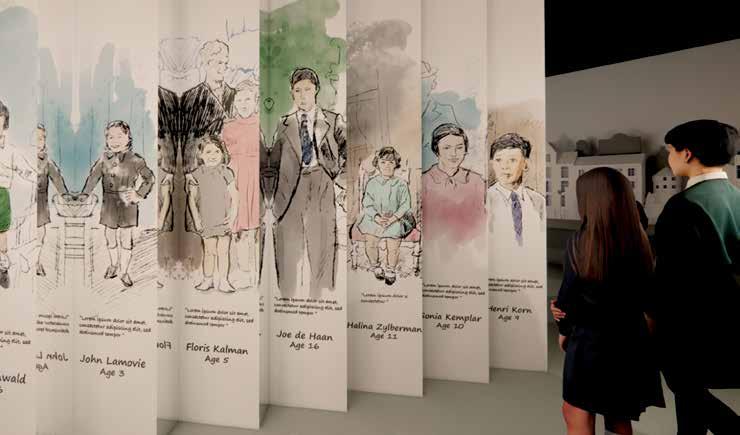
2 minute read
TheHidden Exhibition
We look forward to welcoming you to the new permanent exhibition entitled Hidden: Seven Children Saved. Designed to engage young visitors with the lessons of the Holocaust, the exhibition explores experiences of children in hiding during the war who later migrated to Melbourne.
The youth-focused exhibition – the first of its kind in Australia – will launch later in 2023. It will complement our main permanent Holocaust exhibition by providing ageappropriate learning for younger visitors.
Advertisement
The exhibition has emerged through our partnership with the Gandel Foundation. In 2013, they funded the acclaimed touring exhibition which we hosted Anne Frank – A History for Today. Seeing young visitors resonate with the exhibition’s themes, we developed an award-winning education program Hide and Seek with multi-year funding from Gandel Foundation in 2014.
Hide and Seek became central to our offerings for students in levels 5 – 7 so much that it inspired us to join forces with the Gandel Foundation again to create a dedicated space for younger audiences in our new museum.
“The recent Gandel Holocaust Survey showed that one of the two most important ways in which the public learns about the Holocaust is visiting a museum (the other being specific Holocaust education in schools),” says Vedran Drakulic OAM, CEO of Gandel Foundation. “It was critically important to offer this type of experience for young people, teaching them about the Holocaust through the eyes of their peers –Jewish children who were trying to survive, and who later settled in Melbourne.”
The exhibition explores the lives of seven local child survivors – Joe de Haan, John Lamovie, Halina Zylberman, Paul Grinwald, Henri Korn, Sonia Kempler and Floris Kalman – drawing from their firstperson narratives. It emphasises the survivors’ bravery and perseverance, alongside the acts of kindness by others that helped save their lives.
The exhibition showcases primary source material from our collection, keeping a child’s perspective in mind, including testimonies, artefacts, photographs, and documents from the Holocaust. One interesting item includes Joe de Haan’s false identity card issued in 1941, identifying him as delivery boy Willem Walvis.
It was too dangerous for Joe to stay in his hometown, so he was hidden by the resistance in the north of the Netherlands. Joe spent nine years volunteering at our museum sharing his experience with students.
The exhibition also comprises cutting-edge exhibition technologies, including soundscapes, moving image, projections, illustrations, and dioramas, to create an immersive learning journey. Building on a concept developed with Thylacine Design, we are now working with Art Processors to bring the exhibition to life.
Art Processors have worked with arts and culture industry leaders, including the Art Gallery of New South Wales, Australian War Memorial, MONA, and significant
by Jennifer Levitt Maxwell
overseas organisations, including the Getty and Portland Museum of Art.
We look forward to sharing Hidden: Seven Children Saved with younger visitors and interested families once the museum reopens later this year.
Acknowledgements
Funded by Gandel Foundation
With assistance from the Conference on Jewish Material Claims Against Germany Sponsored by the Foundation “Remembrance, Responsibility and Future” Supported by the German Federal Ministry of Finance
by Meg Hibbert






